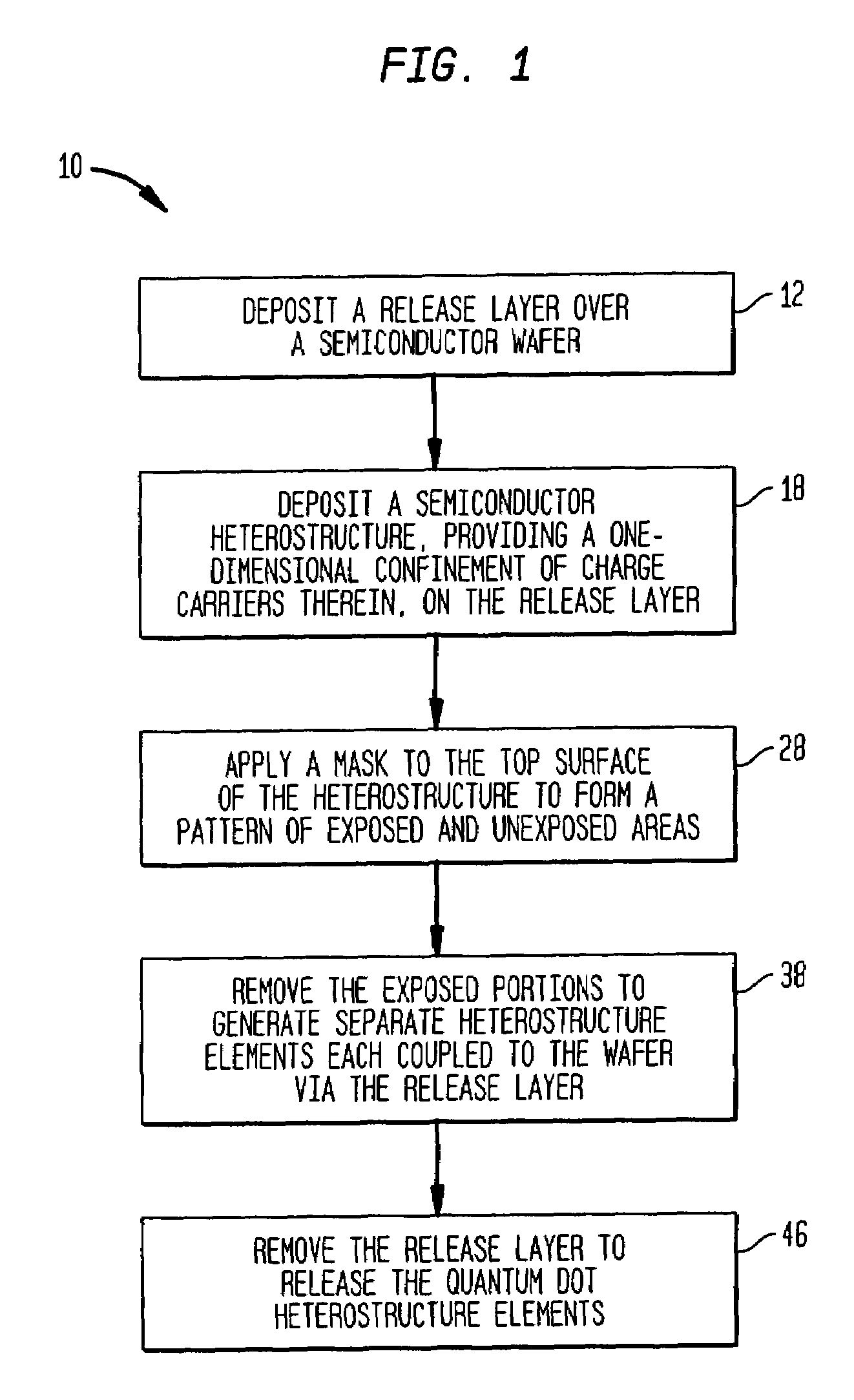Precision synthesis of quantum dot nanostructures for fluorescent and optoelectronic devices
a quantum dot nanostructure and fluorescent and optoelectronic device technology, applied in the field of semiconductor nanostructure production methods, can solve the problems of spectral broadening and weakening of photon emission, difficult control of large-scale production of quantum dots having size uniformity, and achieve the effect of enhancing size uniformity
- Summary
- Abstract
- Description
- Claims
- Application Information
AI Technical Summary
Benefits of technology
Problems solved by technology
Method used
Image
Examples
Embodiment Construction
[0024]The invention is generally directed to design and synthesis of quantum dot structures, e.g., quantum dot nanoparticles, having improved size uniformity. The terms “nanoparticles,”“nanostructures,” and “quantum dots” are used interchangeably herein to describe materials having dimensions of the order of one or a few nanometers to a few micrometers, more preferably from about 1 to about 100 nanometers of active device structure that possesses optical properties derived from the excitation of a confined population of charge carriers.
[0025]In general, in a method of the invention for generating quantum dot nanoparticles, a release layer is deposited on a semiconductor wafer followed by deposition of additional layers that form a heterostructure providing a one-dimensional confinement of electrons or other charge carriers. A plurality of ion-blocking nano-particles, e.g., gold particles, are disposed on a top surface of the wafer to form a mask for protecting portions of the hetero...
PUM
 Login to View More
Login to View More Abstract
Description
Claims
Application Information
 Login to View More
Login to View More - R&D
- Intellectual Property
- Life Sciences
- Materials
- Tech Scout
- Unparalleled Data Quality
- Higher Quality Content
- 60% Fewer Hallucinations
Browse by: Latest US Patents, China's latest patents, Technical Efficacy Thesaurus, Application Domain, Technology Topic, Popular Technical Reports.
© 2025 PatSnap. All rights reserved.Legal|Privacy policy|Modern Slavery Act Transparency Statement|Sitemap|About US| Contact US: help@patsnap.com



